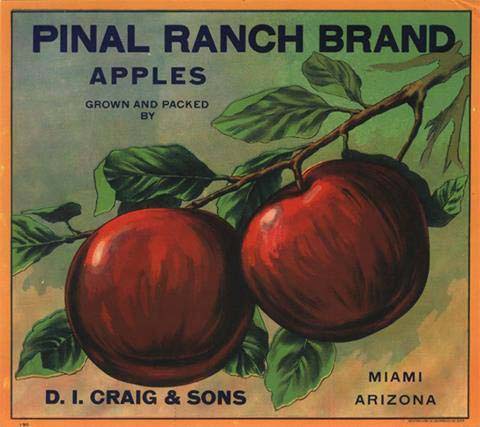
First used as a remote military outpost, the Pinal Ranch is located in the mountainous copper mining district of eastern central Arizona. Originally established in 1870 by General George Stoneman of the U.S. Army, it was known as Camp Pinal and was used as an outpost during the Apache Campaigns. The original one room log cabin was abandoned by the military in the fall of 1872.
Sometime prior to 1878, Andrew Hawkins and Tom Buchanan had taken up residence as squatters at Camp Pinal. John Irion, a newcomer to the area, bought out Hawkins’ half interest in the property. As an early improvement, Irion added an adobe room to the existing log cabin.
In the late 1870s and early 1880s John Irion together with Buchanan fed and lodged travelers and pack trains at the Pinal Ranch. Most of those using the ranch as a stop-over were passing from the rich “Silver King” minion into the mining district around Globe, Arizona. Not long after, Buchanan sold his half interest in the ranch to Irion.
Born in Kansas in 1865, Dudley I. Craig was the stepson of John Irion’s brother, Robert Irion. In 1906, Craig constructed a narrow one lane wagon from their Pinal Ranch eastward towards Globe. Since this road began at their ranch, their place continued to be used as a stop-over on the road between the Salt River Valley and western New Mexico.
Portions of Dudley Craig’s road, with some improvements, were still in use up until 1920 – 21. By 1922 the state of Arizona had completed what was then known as the “Million Dollar Highway.” Today this road through the Pinal Mountains is known as U.S. Highway 60.
As ranchers, road builders, and stage stop operators, Irion and Craig must have indeed been occupied. Yet during this period they also established a viable commercial apple orchard. The existence of the “Pinal Ranch Brand” apple crate label is testimony to this undertaking.
In the mid 1900s their first commercial crops were delivered by wagon to Globe. In 1913 the family purchased a truck making it possible to travel to Globe in two hours. Using a long winding route eastward and then turning westward onto the “Apache Trail” then past newly constructed Roosevelt Dam, their apples could be delivered to Phoenix. As the crow flies it was only seventy miles from the ranch to the Phoenix area. However, the trip itself required two nights of camping out along the road before reaching their destination.
Prior to 1922 Irion and Craig were growing and packing apples under the “Pinal Ranch” brand. By late 1922, the western Lithograph Co. of Los Angeles had printed a crate label with only D. I. Craig & Sons listed as the grower-packers. In late 1925 Western Lithograph again printed a crate label for the ranch. This label was almost a reverse mirror image of the earlier 1922 label.
In addition to being a orchardist, engineer and cattleman, Craig was to gain national attention as a volunteer weather observer. In June 1953, Craig was commended by Arizona Governor Pyle, by the Chief of the U.S. Weather Service, and by the Secretary of Commerce. This commendation was for his sixty years of consecutive daily weather observations. These daily observations dating from 1893 to 1953 indicate that the Pinal Ranch at 4520 feet received about 25 inches of rainfall per year.
In 1973 the last of the Craig family sold and moved from the ranch. The new owner attempted a variety of projects at the site. To a large extent the orchards suffered neglect. The two story packing shed with its nitrogen based cooling system was carved up into a rental storage room complex. The various cabins and houses on the property were badly abused by the rental tenants.
Fortunately for the ranch, another owner recently acquired the property. The main house, surrounded by ponderosa pines, is a large ranch style adobe structure. This fine old Arizona home is now undergoing loving renovation by the present owners.
Editor’s Note: This article originally appeared in the September 1989 issue of the Oracle Magazine. The author, John Medley, lives in Oracle. He is a historian, published writer and presenter of historical talks. John is a collector of crate labels and a member of the Oracle Historical Society.
